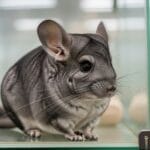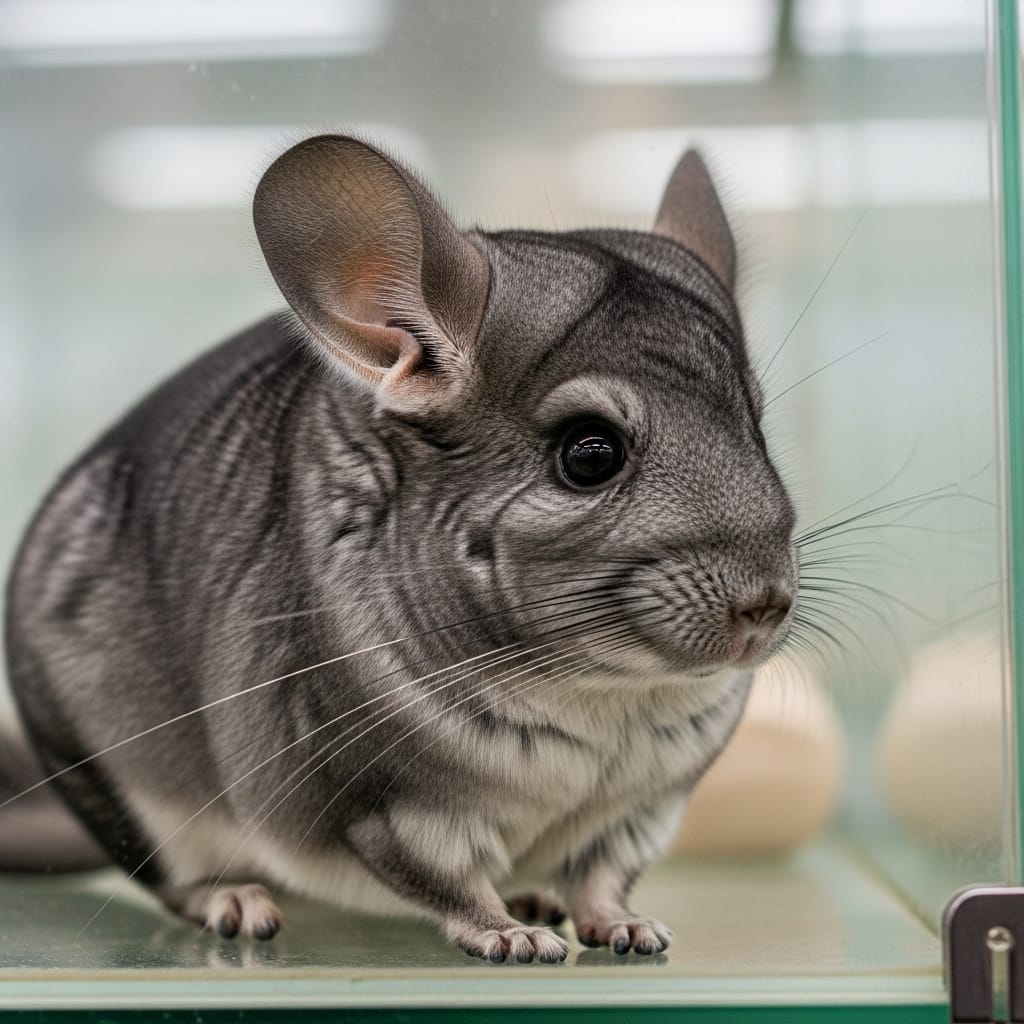
Thinking of a Chinchilla? Your Ultimate Guide to a Furry Future
There’s something undeniably captivating about a chinchilla. Perhaps it’s their impossibly soft fur, which feels like a cloud made tangible. Maybe it’s their large, expressive eyes and twitching whiskers that seem to convey a world of curiosity. Or it could be their energetic, popcorn-like jumps as they explore their surroundings. Whatever the reason, you’ve found yourself drawn to these enchanting rodents, and the thought, “I want a chinchilla,” has taken root. But before you type “chinchilla for sale” into your search bar and bring home the first cute face you see, it’s crucial to understand that you’re not just buying a pet; you’re embarking on a long-term, rewarding, and demanding journey.
This guide is designed to walk you through every facet of that journey. We’ll move beyond the initial purchase and delve into the realities of chinchilla ownership. From creating the perfect habitat to understanding their unique dietary needs and quirky personalities, we’ll equip you with the knowledge to decide if a chinchilla is truly the right companion for you and, if so, how to provide a home where they won’t just survive, but thrive for years to come.
Beyond the Cuteness: Understanding the Chinchilla
Before committing to a chinchilla, it’s essential to know what they are and where they come from. Chinchillas are not hamsters or guinea pigs with fluffier coats. They are unique creatures with very specific needs rooted in their native habitat. Hailing from the cold, arid Andes Mountains of South America, these crepuscular rodents (most active at dawn and dusk) are built for a harsh environment. Their legendary fur, boasting up to 60 hairs from a single follicle, is a testament to this, designed to insulate them from the mountain chill. This dense coat also means they are incredibly susceptible to overheating, a critical factor for any potential owner.

One of the most significant commitments you make when getting a chinchilla is time. These are not short-lived pets. A well-cared-for chinchilla can live for 15 to 20 years, a lifespan more akin to a dog or cat than a typical small rodent. This isn’t a pet for a child who might lose interest or a young adult whose living situation is uncertain. This is a long-term companion that will be part of your family for a decade or more. Their intelligence and individual personalities mean you will form a deep bond, but it requires patience and consistency. They are naturally social animals, and while some can live happily alone with enough human interaction, many do best in bonded pairs, which is another consideration for space and cost.
The Real Financial Picture: Budgeting for a Chinchilla
The initial price of a chinchilla can be deceptive. While you might find one for anywhere from $150 to $400, depending on the source and color mutation (standard gray is typically the least expensive), this is just the tip of the financial iceberg. The upfront cost of supplies will often exceed the cost of the animal itself.
Let’s break down the essential start-up costs:
- The Cage: This is the single most important purchase you will make. Chinchillas need a multi-level wire cage with a solid floor or ramps to prevent foot injuries. Plastic components should be kept to an absolute minimum, as chinchillas will chew through them, which can cause dangerous intestinal blockages. Expect to spend between $200 and $400 on a high-quality, appropriately sized cage like a Ferret Nation or Critter Nation model.
- Climate Control: This is a non-negotiable expense. Chinchillas cannot tolerate temperatures above 75°F (24°C). If you live in a climate that experiences warm summers, you MUST have a reliable air conditioning unit in the room where the chinchilla lives. A window unit or a portable AC can cost between $200 and $500. This is a life-or-death necessity.
- Essential Accessories: You’ll need a glass water bottle, a ceramic food bowl, a large hidey-house made of untreated wood, and wooden ledges for perching. These items can add another $50 to $100 to your initial setup.
- Food and Hay: A high-quality chinchilla pellet and a large bag of Timothy hay are crucial. The initial supply will run about $30 to $50.
- Dust Bath: Chinchillas clean themselves in special volcanic ash dust, not water. A dust house and a container of chinchilla dust are essential for their coat and skin health, costing around $25.
When you add it all up, the initial investment for a single chinchilla can easily range from $650 to well over $1,200. And the costs don’t stop there. Monthly expenses for food, hay, dust, and chew toys can be around $40-$60. More significantly, you must budget for veterinary care. Chinchillas require an exotic pet vet, whose services are often more expensive than a standard vet. An annual check-up is recommended, and an emergency fund of several hundred dollars is a wise precaution for unexpected health issues.
Where to Find Your Chinchilla: A Guide to Sources
Once you’ve decided you’re ready for the commitment, the next step is finding your new friend. The source you choose has a massive impact on the health, temperament, and well-being of your pet.
Reputable Breeders
A high-quality, ethical breeder is often the best choice for a first-time owner. A good breeder prioritizes the health and socialization of their animals above all else. They will be able to provide a detailed history of the chinchilla, including its lineage, date of birth, and any known health concerns. A reputable breeder will have clean, spacious facilities and will be happy to show you the parents and the environment where the chinchillas are raised. They will handle their kits (baby chinchillas) from a young age, resulting in a more socialized and less fearful pet. Expect to be asked many questions yourself; a good breeder wants to ensure their animals are going to a knowledgeable and prepared home. They also serve as an invaluable resource for the lifetime of your pet.
Chinchilla Rescues
Adopting from a rescue is a wonderful option. Many chinchillas end up in rescues because their previous owners were unprepared for their long-term needs. These organizations are often filled with animals who desperately need a second chance at a loving, permanent home. Rescue staff are typically very knowledgeable about chinchilla care and will work to match you with an animal whose personality fits your lifestyle. The chinchilla will have already been assessed for health and temperament, and adoption fees are usually much lower than the purchase price from a breeder. By adopting, you are not only gaining a companion but also helping to alleviate the pet overpopulation problem.
Pet Stores
Caution is advised when considering a pet store chinchilla. While some chains have improved their standards, many large-scale pet stores source their animals from “rodent mills,” which are commercial breeding facilities that prioritize quantity over quality. Animals from these environments are often stressed, poorly socialized, and may have underlying health or genetic issues. They are frequently housed in improper conditions (small cages, wrong temperature) and fed incorrect diets. While you may feel like you are “rescuing” the animal, your purchase ultimately supports this unethical supply chain. If you must consider a pet store, do extensive research on their animal sourcing and care standards.
A Chinchilla’s Palace: Creating the Ideal Habitat
Your chinchilla will spend a significant portion of its life in its cage, so making it a safe, stimulating, and comfortable environment is paramount.
As mentioned, the cage should be tall and multi-leveled with a wire construction for ventilation. The bar spacing should be no more than 1″ x 0.5″ to prevent escapes or injuries. Inside the cage, avoid plastic at all costs. Opt for kiln-dried pine or aspen wood for ledges and hideaways. Provide a variety of textures and enrichment opportunities. Applewood sticks, lava ledges, and other chinchilla-safe chew toys are not just for fun; they are essential for wearing down their constantly growing teeth.
The location of the cage is just as important as the cage itself. It should be in a quiet, low-traffic area of your home, away from direct sunlight and drafts. The room must be temperature-controlled, staying consistently between 60-70°F (15-21°C). Remember, a chinchilla can die from heatstroke in temperatures that feel perfectly comfortable to a human.
Diet and Dust: The Pillars of Chinchilla Health
A chinchilla’s digestive system is incredibly sensitive and has evolved to process high-fiber, low-nutrient grasses. Replicating this is the key to their health.
- Hay is Everything: Unlimited, fresh Timothy hay should make up the vast majority of their diet. It provides the essential fiber needed for proper gut motility and helps to wear down their teeth.
- High-Quality Pellets: A plain, high-quality chinchilla pellet (like Oxbow or Mazuri) should be provided in limited quantities—about 1-2 tablespoons per day. Avoid pellets that are mixed with seeds, nuts, or colorful dried fruit, as these are unhealthy treats that your chinchilla will pick out, ignoring the essential nutrition.
- Treats are Rare: Chinchillas have a sweet tooth, but sugar is very bad for them and can lead to fatal digestive issues. Treats should be given sparingly (a few times a week at most). Safe options include a single plain Cheerio, an unsweetened shredded wheat square, or a dried rosehip. Never give them fresh fruits or vegetables.
- The Dust Bath Ritual: A few times a week, you should place a container with about an inch of chinchilla dust in their cage for 10-15 minutes. They will gleefully roll and flip in it. This is how they keep their fur clean, dry, and free of oils. Never bathe a chinchilla in water, as their dense fur takes a very long time to dry and can lead to fungal infections or hypothermia.
Living with a Chinchilla: Playtime, Bonding, and Behavior
Chinchillas are intelligent and curious, but they are also prey animals, which means they can be skittish and require a patient approach to earn their trust. When you first bring your chinchilla home, give them several days to acclimate to their new surroundings before attempting to handle them. Start by simply sitting by the cage and talking to them in a calm voice.
Out-of-cage playtime is essential for their physical and mental well-being. This should be for at least an hour each evening in a “chinchilla-proofed” room. This means covering all electrical wires, removing any house plants, and blocking off any small spaces where they could get stuck. Playtime is a wonderful opportunity to bond with your pet. Let them come to you. Sit on the floor and allow them to climb on you. With time and patience, you can build a strong, interactive relationship.
So, as you stand on the precipice of chinchilla ownership, look beyond the initial appeal. See the 20-year commitment, the need for a climate-controlled environment, the specific diet, and the patient bonding process. If you can honestly say that you are prepared to meet these needs, then you are ready. You are ready to provide more than just a home; you are ready to provide a sanctuary for one of nature’s most unique and charming creatures, and the years of joyful companionship you’ll receive in return are truly priceless.







